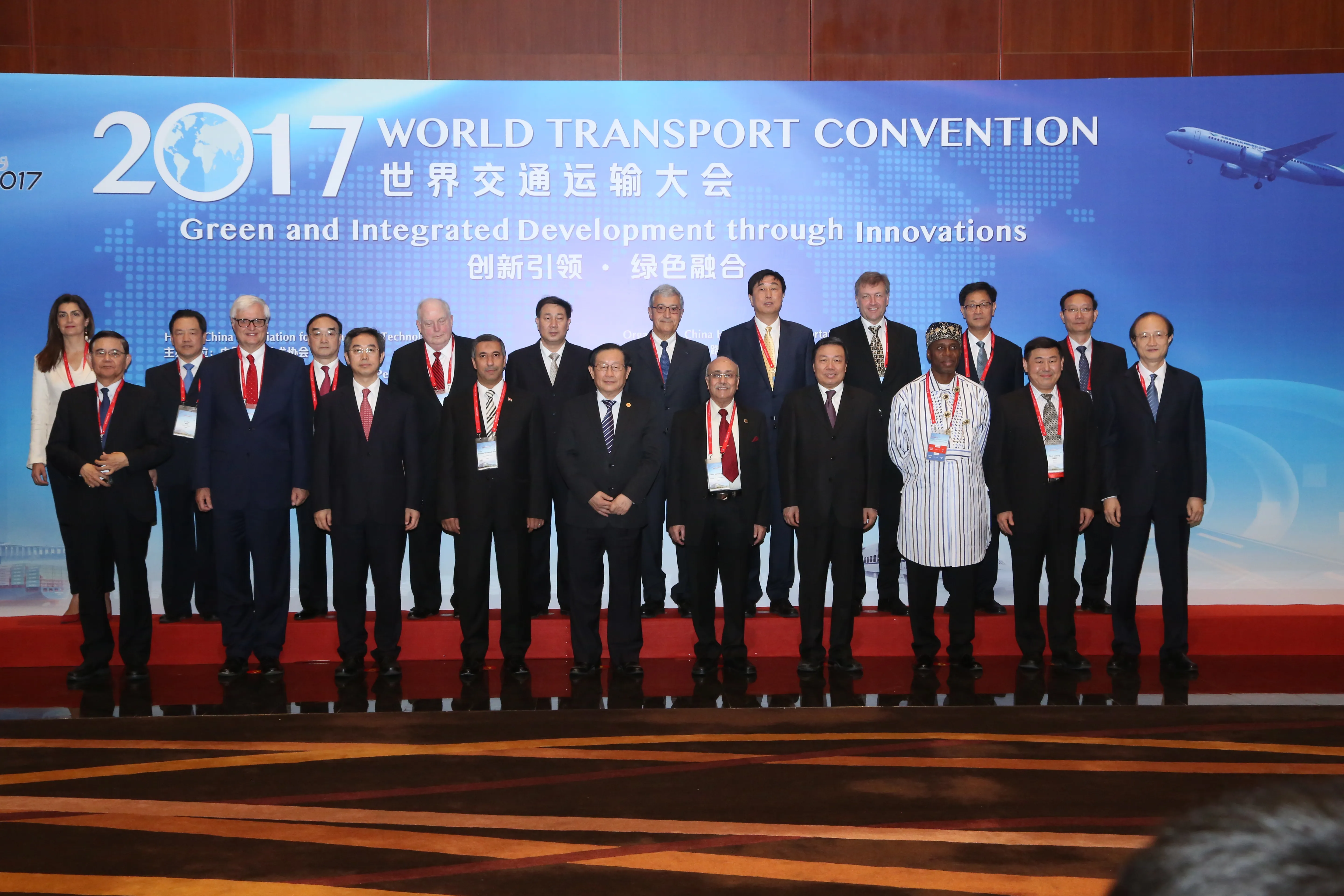If the countries of the Association of Southeast Asian Nations (ASEAN) formed a single economic entity, they would represent the 7th largest economy in the world, with an expectation to be the 4th largest by 2050 on current growth patterns.
It is a region with much unrealised potential and favourable demographic
trends. It also lies at the heart of several regional trade initiatives that will significantly boost infrastructure investments in the region, such as China’s 'One Belt, One Road' programme
August 22, 2016
Read time: 4 mins

RSSIf the countries of the Association of Southeast Asian Nations (ASEAN) formed a single economic entity, they would represent the 7th largest economy in the world, with an expectation to be the 4th largest by 2050 on current growth patterns.
It is a region with much unrealised potential and favourable demographic
trends. It also lies at the heart of several regional trade initiatives that will significantly boost infrastructure investments in the region, such as China’s 'One Belt, One Road' programme and the Trans-Pacific Partnership Agreement. As an example, Indonesia alone is expected to benefit from US$87.4 billion of mostly road and transport investments from the 'One Belt, One Road' initiative alone. With its location, economy, and needs, the region is at the heart of a much needed infrastructure spending boom, projected at US$128 billion of estimated road investments in 2013 to 2020.
In order to maximise the impact of this opportunity, ASEAN countries need to strategically prioritise their upcoming road and transport investments; missing road links need to be completed and existing road infrastructure links needs to be upgraded. In addition, there need to be a significant effort to harmonise and upgrade standards, especially with the ASEAN common market coming into effect this year.
Even with the increase in expected funding sources, financing will still be a major challenge requiring significant involvement from the private sector. This will be needed to bridge the funding gap through a proper identification and selection of projects that are 'bankable', and the creation of the right legal and regulatory frameworks. ASEAN countries such as Malaysia and Indonesia now have significant experience in developing road public-private partnerships (PPPs) and, in the case of Malaysia, their PPP players are now actively seeking opportunities outside their home country. It is expected that the ASEAN common market will help accelerate the pace of private infrastructure financing in the region, leveraging the experiences, resources and skills of the various ASEAN countries.
Moreover, the amount of financial investments expected will necessitate that ASEAN road agencies have proper asset-management systems and procedures. It has been the experience of3918 IRF Washington that many road agencies in emerging nations have a sound understanding of asset management and its importance.
However, they are not given the tools or resources to implement, which results in the significant loss of investment value over time. This will take a political commitment from the ASEAN countries, while IRF and other stakeholders have the responsibility and mandate to help ensure the political decision makers understand the concepts and requirements of proper asset management.
The region continues to struggle against the rising epidemic of traffic injuries. According to ASEAN statistics, more than 75,000 people die and 4.7 million more are injured annually in the region. This results in a loss of US$15 billion each year — or 2.2% of the economic bloc’s gross domestic product. Education, along with harmonised and upgraded standards, can significantly reduce these numbers. A positive sign for ASEAN is the establishment of an ASEAN Road Safety Center of Excellence led by IRF member, the Malaysia Institute of Road Safety Research (MIROS). Eliminating and reducing needless deaths in ASEAN can help free up much needed future funds to be invested in the upgrading of the road infrastructure. The cost of road fatalities is too often neglected not just in ASEAN countries, but around the globe, as well.
It is against this unprecedented backdrop in road investments that IRF will hold the 2nd IRF Asia Regional Congress & Exhibition in Kuala Lumpur, Malaysia, on 16 to 20 October 2016. The Congress will be the most significant regional road event in 2016, bringing top government officials, road and transport experts, and the world’s leading road infrastructure firms to Kuala Lumpur. The Congress will focus on technologies, policies and innovations that can maximise the socio-economic benefits of the vast sum of road infrastructure investments coming to the region and Asia as a whole.
It will also serve as business hub, helping to facilitate connections and showcasing investment opportunities for regional and international companies in ASEAN. According to IRF vice president Magid Elabyad, “For professionals interested in enhancing their technical knowledge and networking with like-minded peers or for organisations looking for business opportunities in this dynamic region, this is a must-attend event.”
It is a region with much unrealised potential and favourable demographic
trends. It also lies at the heart of several regional trade initiatives that will significantly boost infrastructure investments in the region, such as China’s 'One Belt, One Road' programme and the Trans-Pacific Partnership Agreement. As an example, Indonesia alone is expected to benefit from US$87.4 billion of mostly road and transport investments from the 'One Belt, One Road' initiative alone. With its location, economy, and needs, the region is at the heart of a much needed infrastructure spending boom, projected at US$128 billion of estimated road investments in 2013 to 2020.
In order to maximise the impact of this opportunity, ASEAN countries need to strategically prioritise their upcoming road and transport investments; missing road links need to be completed and existing road infrastructure links needs to be upgraded. In addition, there need to be a significant effort to harmonise and upgrade standards, especially with the ASEAN common market coming into effect this year.
Even with the increase in expected funding sources, financing will still be a major challenge requiring significant involvement from the private sector. This will be needed to bridge the funding gap through a proper identification and selection of projects that are 'bankable', and the creation of the right legal and regulatory frameworks. ASEAN countries such as Malaysia and Indonesia now have significant experience in developing road public-private partnerships (PPPs) and, in the case of Malaysia, their PPP players are now actively seeking opportunities outside their home country. It is expected that the ASEAN common market will help accelerate the pace of private infrastructure financing in the region, leveraging the experiences, resources and skills of the various ASEAN countries.
Moreover, the amount of financial investments expected will necessitate that ASEAN road agencies have proper asset-management systems and procedures. It has been the experience of
However, they are not given the tools or resources to implement, which results in the significant loss of investment value over time. This will take a political commitment from the ASEAN countries, while IRF and other stakeholders have the responsibility and mandate to help ensure the political decision makers understand the concepts and requirements of proper asset management.
The region continues to struggle against the rising epidemic of traffic injuries. According to ASEAN statistics, more than 75,000 people die and 4.7 million more are injured annually in the region. This results in a loss of US$15 billion each year — or 2.2% of the economic bloc’s gross domestic product. Education, along with harmonised and upgraded standards, can significantly reduce these numbers. A positive sign for ASEAN is the establishment of an ASEAN Road Safety Center of Excellence led by IRF member, the Malaysia Institute of Road Safety Research (MIROS). Eliminating and reducing needless deaths in ASEAN can help free up much needed future funds to be invested in the upgrading of the road infrastructure. The cost of road fatalities is too often neglected not just in ASEAN countries, but around the globe, as well.
It is against this unprecedented backdrop in road investments that IRF will hold the 2nd IRF Asia Regional Congress & Exhibition in Kuala Lumpur, Malaysia, on 16 to 20 October 2016. The Congress will be the most significant regional road event in 2016, bringing top government officials, road and transport experts, and the world’s leading road infrastructure firms to Kuala Lumpur. The Congress will focus on technologies, policies and innovations that can maximise the socio-economic benefits of the vast sum of road infrastructure investments coming to the region and Asia as a whole.
It will also serve as business hub, helping to facilitate connections and showcasing investment opportunities for regional and international companies in ASEAN. According to IRF vice president Magid Elabyad, “For professionals interested in enhancing their technical knowledge and networking with like-minded peers or for organisations looking for business opportunities in this dynamic region, this is a must-attend event.”








